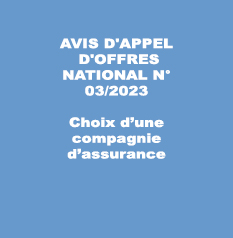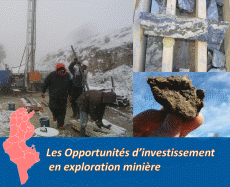| Programme annuel & rapport de suivi technique |
-

Rapport d'activités 2023
-

Programmes Techniques 2024
|
| Géocatalogue |

|
| Appels d'Offres |
-

ACQUISITION DES TICKETS RESTAURANT POUR LE PERSONNEL DE L’ONM
-

CHOIX D’UNE COMPAGNIE D’ASSURANCE
-

ACQUISITION ET MISE EN ŒUVRE D’UN PROGICIEL DE GESTION INTEGRE
|
|
Investir en Tunisie |


|
|
|
|
|
::
Documentation and Editions
>>
Research library
|
| |
|
[
Search by author
]
[
Search keyword
]
[
Search by index
]
[
Search by category
]
|
title of the reference :
|
Les structures en décrochement au Jurassique de la Tunisie du Nord
|
|
Publication Date:
|
1992
|
|
Author :
|
Alouani Rabeh, Rais Jamila, Gaya Sahirou, Tlig Said
|
|
Catalogue type :
|
Livre
|
|
Catalogue reference :
|
T.315 (FRA) C. R. Acad. Sci. T.315 Les structures en décrochement au Jurassique de la Tunisie du Nord témoins d'une marge transformante entre Afrique et Europe. In Northern Tunisia Jurassic basins which resulted from normal block-faulting (grabens, horsts and half-grabens)during the Middle-Upper Liassic, have been restructured during the Dogger-Malm by wrenching movements induced by originally Hercynian major strike-slip faults (EW sinistral and SN dextral slip-faults). Wrenching in both vertical and horizontal plans, directed along two major accidents gave 'coins en compression' at the junction of EW and NS striking faults, thus restructuring the preexisting tilted-block basins by inversions of the corresponding subsidence regime and sedimentation in these basins have been closely governed by the spatio-temporal migration of the subsidence which induced back-erosion of blocks, mass gravity flows, reduction of thickness and local gaps during the Dogger-Malm. These results point to the transform-behaviour of the North African margin during these times that led to the differentiation of the 'Maghrebian Tethys' arrived at by previous workers. bibliogr. Graben ; Horst ; Faille décrochement ; Bassin sédimentaire ; Contrôle tectonique ; Subsidence ; Téthys ; Marge continentale active ; Jurassique ; Secondaire ; horst ; faille transformante ; cisaillement ; compression ; pli ; paléogéographie ; faille ; coulissement ; Tunisie ; Tunisie Nord Orientale ; Europe ; Téthys ; J. Beni Kleb ; jedeida ; J. Ammou ; Mejez El Bab ; J. Oust ; J. Aziz ; J. Bou Kornine Rais Jamila Gaya Sahirou Tlig Said Alouani Rabeh Tectonique
|
|
Indexation decimale :
|
Tectonique
|
|
Keywords :
|
Graben ; Horst ; Faille décrochement ; Bassin sédimentaire ; Contrôle tectonique ; Subsidence ; Téthys ; Marge continentale active ; Jurassique ; Secondaire ; horst ; faille transformante ; cisaillement ; compression ; pli ; paléogéographie ; faille ; coulissement ; Tunisie ; Tunisie Nord Orientale ; Europe ; Téthys ; J. Beni Kleb ; jedeida ; J. Ammou ; Mejez El Bab ; J. Oust ; J. Aziz ; J. Bou Kornine
|
|
Summary :
|
In Northern Tunisia Jurassic basins which resulted from normal block-faulting (grabens, horsts and half-grabens)during the Middle-Upper Liassic, have been restructured during the Dogger-Malm by wrenching movements induced by originally Hercynian major strike-slip faults (EW sinistral and SN dextral slip-faults). Wrenching in both vertical and horizontal plans, directed along two major accidents gave 'coins en compression' at the junction of EW and NS striking faults, thus restructuring the preexisting tilted-block basins by inversions of the corresponding subsidence regime and sedimentation in these basins have been closely governed by the spatio-temporal migration of the subsidence which induced back-erosion of blocks, mass gravity flows, reduction of thickness and local gaps during the Dogger-Malm. These results point to the transform-behaviour of the North African margin during these times that led to the differentiation of the 'Maghrebian Tethys' arrived at by previous workers.
|
|
Exemplaries :
|
TU1637B, TU1637A
|
|
|
|
|
|
|
|



